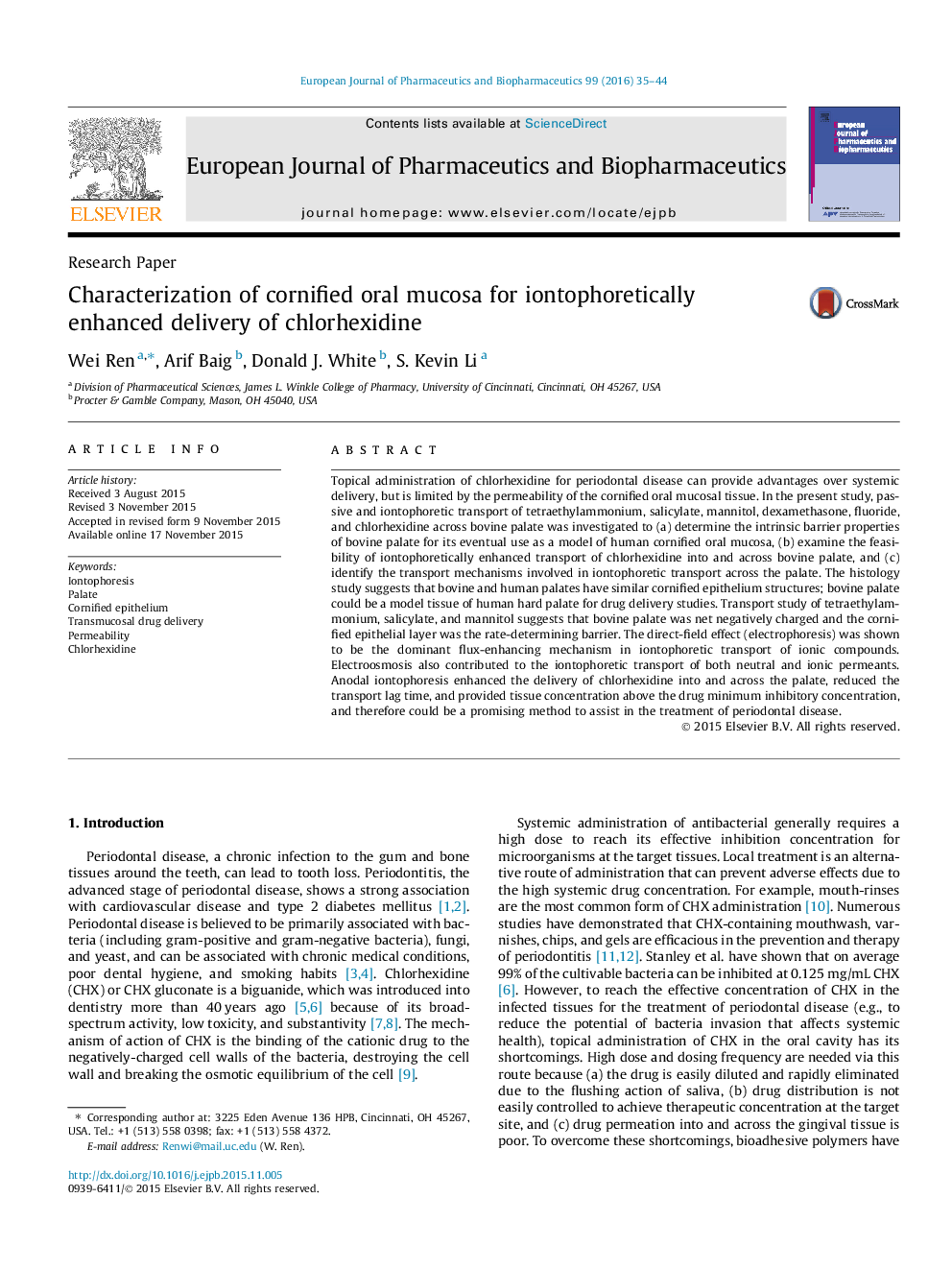| Article ID | Journal | Published Year | Pages | File Type |
|---|---|---|---|---|
| 2083389 | European Journal of Pharmaceutics and Biopharmaceutics | 2016 | 10 Pages |
Topical administration of chlorhexidine for periodontal disease can provide advantages over systemic delivery, but is limited by the permeability of the cornified oral mucosal tissue. In the present study, passive and iontophoretic transport of tetraethylammonium, salicylate, mannitol, dexamethasone, fluoride, and chlorhexidine across bovine palate was investigated to (a) determine the intrinsic barrier properties of bovine palate for its eventual use as a model of human cornified oral mucosa, (b) examine the feasibility of iontophoretically enhanced transport of chlorhexidine into and across bovine palate, and (c) identify the transport mechanisms involved in iontophoretic transport across the palate. The histology study suggests that bovine and human palates have similar cornified epithelium structures; bovine palate could be a model tissue of human hard palate for drug delivery studies. Transport study of tetraethylammonium, salicylate, and mannitol suggests that bovine palate was net negatively charged and the cornified epithelial layer was the rate-determining barrier. The direct-field effect (electrophoresis) was shown to be the dominant flux-enhancing mechanism in iontophoretic transport of ionic compounds. Electroosmosis also contributed to the iontophoretic transport of both neutral and ionic permeants. Anodal iontophoresis enhanced the delivery of chlorhexidine into and across the palate, reduced the transport lag time, and provided tissue concentration above the drug minimum inhibitory concentration, and therefore could be a promising method to assist in the treatment of periodontal disease.
Graphical abstractFigure optionsDownload full-size imageDownload high-quality image (135 K)Download as PowerPoint slide
